#Comic book death
Photo
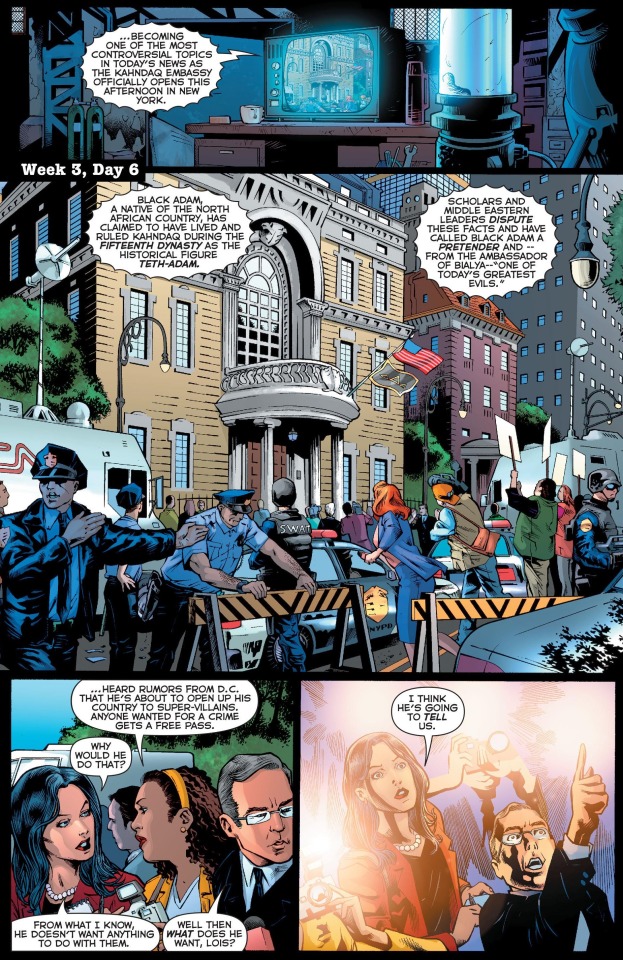


Black Adam vs. Terra-Man.
[from 52 (2006) #3]
#Secret Society of Super-Villains#Black Adam#Terra-Man#Daily Planet#Lois Lane#Monster Society of Evil#Mr. Mind#Justice League#Justice League of America#J.L.A.#Superman#Batman#Wonder Woman#Comic book death
29 notes
·
View notes
Text
Dr. Strange and the Mystery Spheres
I saw an article about a male comic book character dying (not to be named here - Marvel universe) and the article included art. And I have to ask ....
(art below with obscured name)

... are those the character's balls?!? I suspect they are magic bullets or power seeds or something, but they sure do look ballish to me.
1 note
·
View note
Text
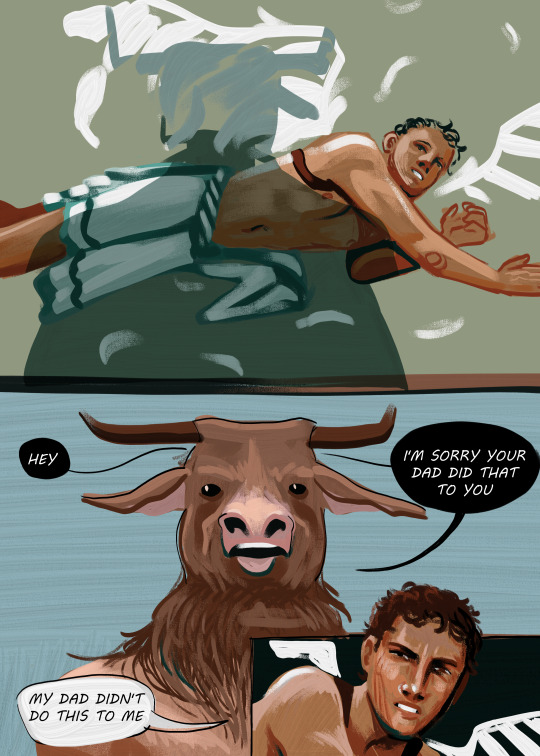
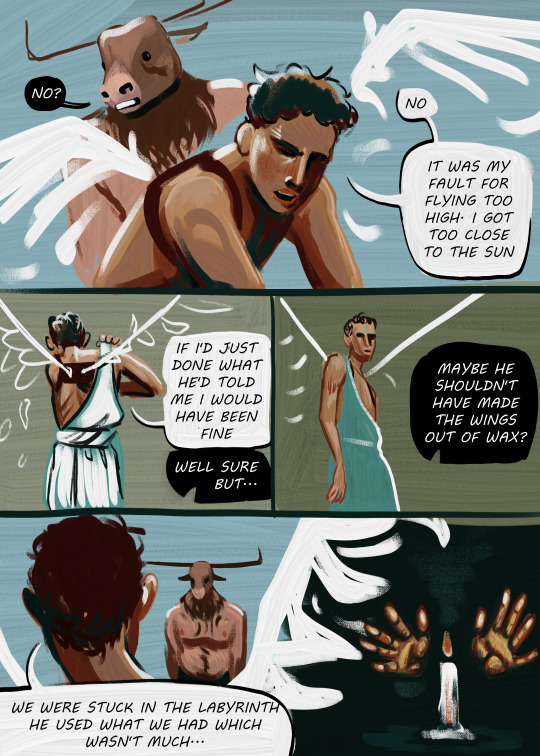

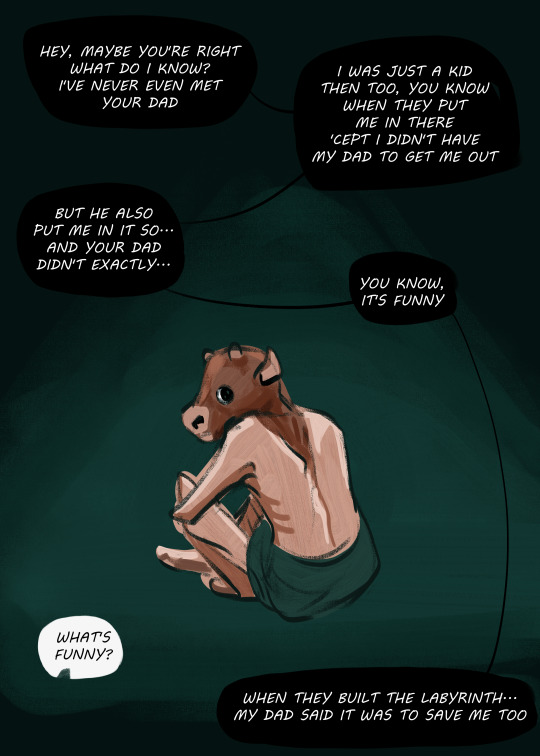

Sons Of The Labyrinth or The Things Our Fathers Do To Us
#tentatively unprivating to post this...might have to private again if the bots attack#death //#icarus#minotaur#daedalus#comics#greek mythology#pulled out my old classic greek myths book to go over the mythology for this and man...#daedalus was kind of a piece of work huh#art tag
62K notes
·
View notes
Text
REPLICA PLAYLIST
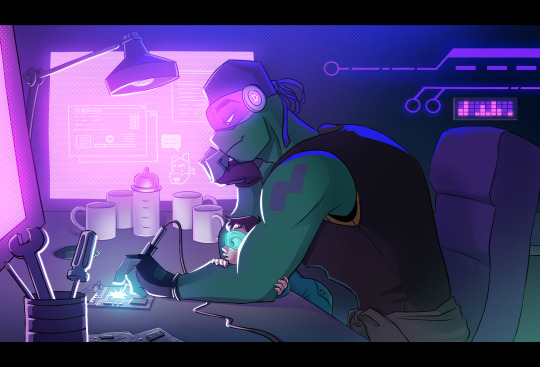
MUSIC UNDER CUT
I have been receiving requests for any songs that inspired Replica, so here, have my personal playlist. Sorry it’s not Spotify/Soundcloud but they don’t have some of these songs available so uh… guess you’re stuck with YouTube vids. For fun I'll include my personal titles for them (which might give a few hints of what to expect in the future/end).
Replica Main Theme - “Die for You” by Grabbitz
Like Father Like Son Like Brother (Omega and Shelldon) - "As Above So Below" by Alistair Lindsay
Mikey's Theme / The 1st Vision - "Suzume no Tojimari" by Nanoka Hara
Military (Mad) Dogs / Central Park Colony - "Imperium" by Madeon
Shanghai - "Icarus" by Madeon
Boom Goes the Donnie-mite (Mikey/Donnie vs the Sweeper) - "The Red Zone" by Mitsuoto Suzuki
The Day the Sky Bled Red - "7 Seconds Till the End" by Nobuo Uematsu
Going Out Like a Boss (Raph and Leo) - "Agape" by Nicholas Britell
Remembering the Right Way (Mikey and Leo) - "The Souls of Many" - by Alistair Lindsay
Mystic Hands / The 2nd Vision - "Am I Dreaming" by Metro Boomin x A$AP
Book 2 Trailer - "Sea Dragon" by Covet
7 Years Later - "Iron" by Woodkid
Leo's Theme / Attack on the Labor Camp - "Ego Death" by Polyphia
Omega's Theme - "Touch" by Daft Punk
Flat Lines (Omega Alone) - "Die Toteninsel Emptiness" by 1000 Eyes
Spear - "Monsters" by Tommee Profitt
Final Protocol - "The Kraken" by Katie Dey
Rise / Epilogue - "Close in the Distance" by Masayoshi Soken & Tom Mills
I will admit, it's a little embarrassing since you can easily see the patterns of what I've been listening to for the past year or two. I swear I listen to more than just videogame OSTs, these songs just jive well with the story and I often find lyrics distracting when brainstorming scenes. Regardless, the music I listen to is such an important part of my creative process and some of these songs really defined the scenes I now have locked in my head. So I figured it was only fair to give them the credit they're due.
I will continue to add to this playlist, and will note in comic updates when one of these songs is applicable!
#lofi Donnie anyone?#also sort of celebration for 19k followers wow#should I do something else for it?#I particularly like Leo's theme being titled Ego Death#very fitting#Also the final song makes me cry because the lyrics are just too dang perfect#I'd like to do an animatic with the song when this story is all done#check out the lyrics if you get the chance#in fact I'd like to do an animatic trailer for the Book 2 Teaser#we'll see though#i can't allow myself to get too distracted from the comic itself haha#replica#rottmnt replica#kathaynesart#playlist#music#spoilers? but like... you know how it ends in the movie so not really?#kind of?#did you see the rise movie?#then you’ve been spoiled sorry#posting again at an ungodly hour#I am tired#save rottmnt#rottmnt#TMNT#Donatello#casey jones
4K notes
·
View notes
Text

#quotes#angst#dc#dc comics#comics#comic books#batfam#batfamily#batkids#jason todd#red hood#robin jason todd#my edits#i made this#bruce wayne#batman#death in the family#ditft#batman comics#comic art#batman urban legends#character angst#jason peter todd#character death#kid jason todd#batman and robin#kait rokowski
1K notes
·
View notes
Text
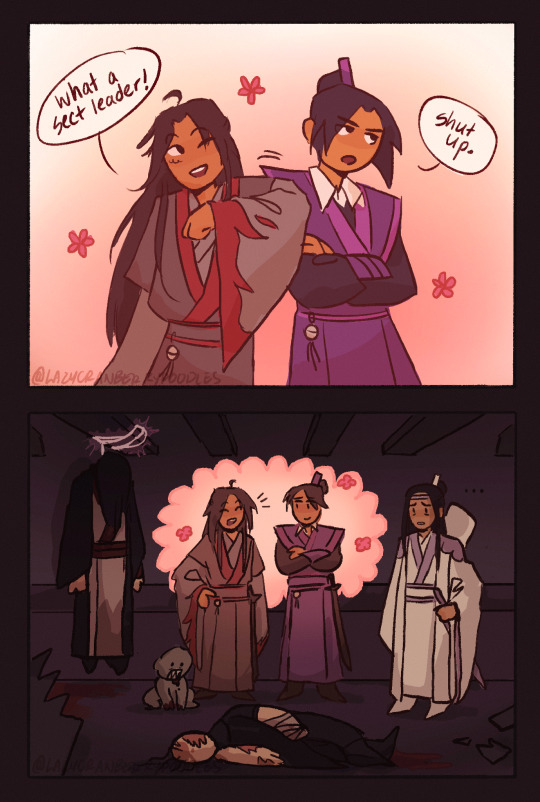
sibling bonding moment!
#oughhhhh#kind of mashed together the book scene and cql scene for this. also somehow invented a whole new dseign for yllz wwx#EVEN THOUGJ HIS NENDEROID IS RIGHT THERE ON MY DESK LOOKING AT ME???#yes wen chao is in the family guy death pose but his fingers are all bitten off so its mot as effective :/#yes at this point his legs have been chewed off. HE CANT DEATH POSE WITHOUT THEM THOUGH#art#my art#comic#mdzs#mo dao zu shi#the grandmaster of demonic cultivation#grandmaster of demonic cultivation#the grandmaster of diabolism#wei wuxian#jiang cheng#twin prides of yunmeng#lan wangji#wangxian#mdzs fanart#mdzs spoilers#wen zhuliu#wen chao#sunshot campaign#lmao#blood cw#hanging cw#violence cw
2K notes
·
View notes
Text
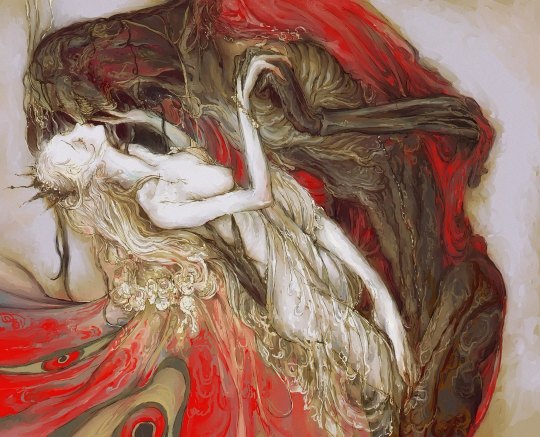
#art#painting#drawing#mixed media#allegory#surreal#illustration#comic books#comic book art#graphic novel#japanese artist#death and the maiden#yoshitaka amano
854 notes
·
View notes
Text
I feel like comic writers and some fans have forgotten that Young Justice is mostly about the girls. The main storylines were about Secret/Greta, Cissie, and Anita. The boys were there but they had their own runs. Take Young Justice Dark Crisis, yeah it's all about the boys IF you only read the first 5 ish comics. After that it's either big comic events or about the girls. Really the girls are the main characters of Young Justice, the boys are there to draw people in.
#young justice 98#young justice#young just us#anita fite#empress#cissie king jones#arrowette#wondergirl#cassie sandsmark#secret#greta hayes#superboy#kon el#impulse#bart allen#robin#tim drake#dc comics#comics#comic books#dark crisis#young justice dark crisis#dark crisis young justice#yj98#i heard someone say that they couldn't make a YJ 98 show cus then id be all about boys. the storylines are Cissie and her stepping away from#being a hero. secret trying to find out who and what she is. Anita and her dads death/parents undeath and he relationship with yj. its about#cassie finding herself out and BECOMEING THE LEADER of Young Justice. hell theirs also Red Tonados daughter Traya who was born in another#country. the girls in her school hate crimed her for it. tell me that aint still relevant! Cissies therapist doied in a school shooting and#the news blamed it on video games and violent media so she went off on them... then tried to kill the people who killed her therapist.#these are the main storyline of yj!
422 notes
·
View notes
Text
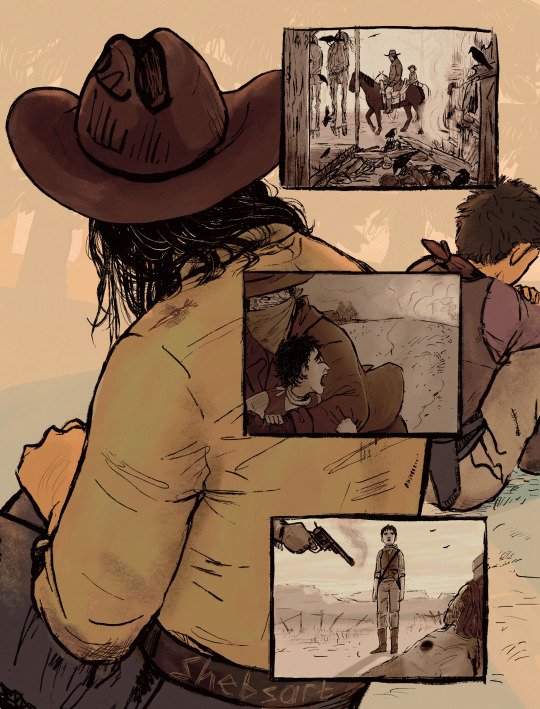
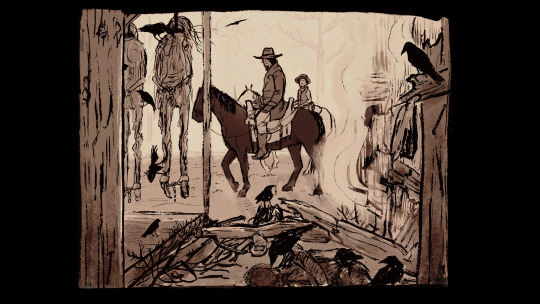
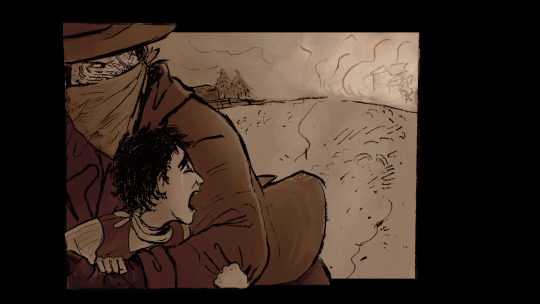
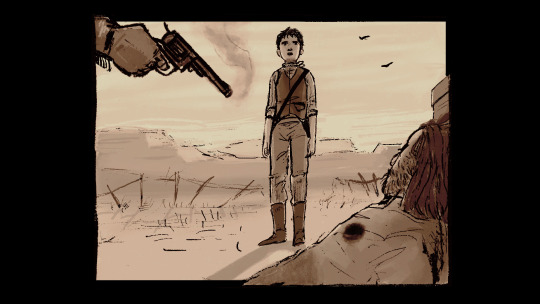
You've heard the stories of me,
You know what I can do
I take the ember's of man's anger
And there's nothing I can't spin them into
#sandor clegane#arya stark#western au#asoiaf#valyrianscrolls#grrm#book#my art#fanart#a song of ice and fire#i originally planned to make a death in asoiaf themed comic to this song but#that was a lot of work lol
369 notes
·
View notes
Text

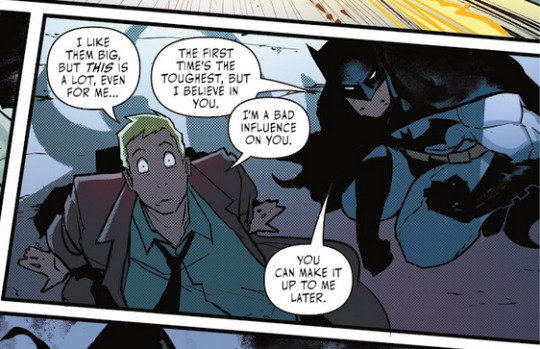

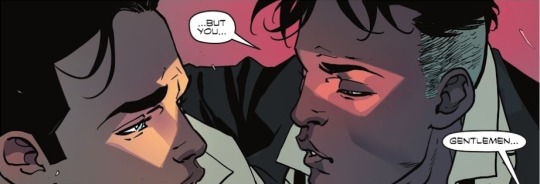
Queer baiting in comics is BACK, BABY
#dc comics#this is not a criticism it's a joke#yes i know it's more coding than baiting considering the writers and how some of these characters are queer#and how these books aren't marketed to bait gay audiences#but there's something about the implied gay best friends in comics that I love#it's a staple of American comics like undoing deaths or capes#bruce wayne#minkhoa khan#ghostbat#batman#ghost maker#cassandra cain#stephine brown#stephcass#batgirls#john constantine#siegfried#dc siegfried#steve trevor#batstantine#tuesday spoilers
2K notes
·
View notes
Text
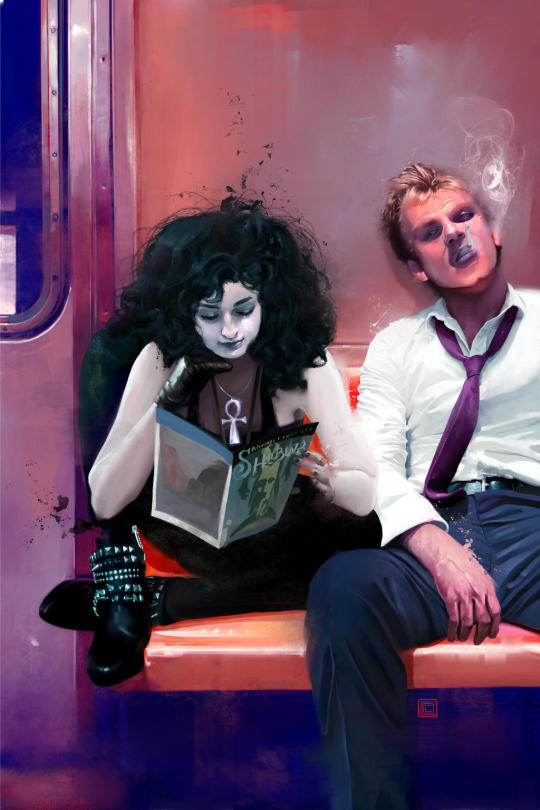
Let's step out of baseball for a sec. This was a book cover. The book was about Vertigo comics, so it's Death from Sandman and John Constantine, meeting in a subway one night. Unfortunately, the book never got published.
#the sandman#death#vertigo comics#john constantine#book cover#unpublished#book art#subway train#night
2K notes
·
View notes
Photo



Black Adam vs. Rough House.
[from 52 (2006) #3]
#Secret Society of Super-Villains#Black Adam#Intergang#Rough House#Noose#Isis#Terra-Man#New Gods#Comic book death
19 notes
·
View notes
Text

Happy Birthday Neil Gaiman! ♡
.
@neil-gaiman If you see this I hope you have a beautiful day!! ♡
.
I share this sketch that I did in 2019 because I didn't have time to make a drawing today hahahaha
.
.
.
.
.
.
.
.
.
.
.
.
.
.
.
So after waking up, I was drinking tea and enjoying the rain.
I left the house to walk through the garden, soon joined by my cat, Vampi, although it wasn't long before he ran to hide when the rain came back a little harder. At that moment, for some reason I remembered that it was November 10th and I hadn't done the birthday drawing as I had planned.
Luckily, I remembered drawing Neil in a sketchbook back in 2019. And here he is. I present to you a drawing that I made before the pandemic, it is strange that those drawings come to light.
My English is bad, so this is all Google Translate, I hope it's not bad xD
#neil gaiman#niel gaiman#neil gaiman sandman#the sandman#sandman fanart#morpheus#death of the endless#dream of the endless#sandman overture#neil gaiman books#neil gaiman comics#the graveyard book#art#neverwhere#sketch art#digital art#drawing#sketches#doodle#sketchbook#sketch#traditional art#my artwork#illustrators on tumblr#illustration#tumblr draw#my draws#neil gaiman fanart#neil gaiman art#neil gaiman sketch
573 notes
·
View notes
Text
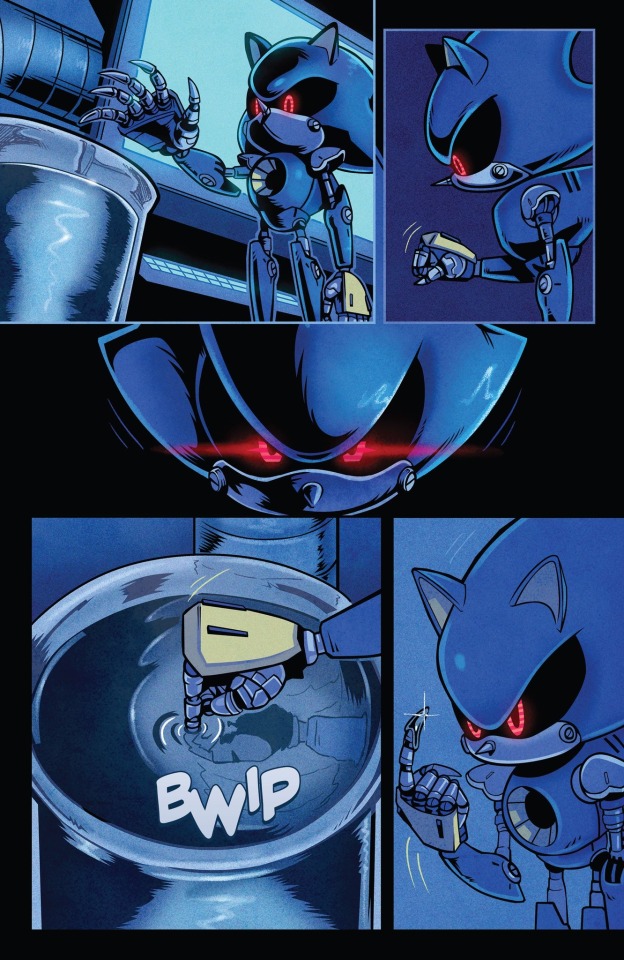

I’m rereading some of the idw Sonic comics, and God damn these pages are so good.
Just a brief moment of hesitation before deciding to risk infection for a chance at closure.
The fact that he can’t speak or make facial expressions, but you can still see the existential dread he’s felling when it doesn’t work.
Metal was willing to die just to see if he was alive
#this is peak Sonic the hedgehog#I know we’ve beaten this to death as a fandom#but I fucking love this shit#it’s one of my favorite things in any comic book ever#sonic the hedgehog#metal Sonic
382 notes
·
View notes
Text
A guide for reading The Sandman: Part 2
So... You have read the full Sandman series. You went from issue 1 to issue 75. From beginning to end. You had all the ten volumes. Congrats!
But I am sorry to tell you, you don’t actually have the full Sandman story. You see, Neil Gaiman wrote and created much more than just the numbered issues. He created a lot of side-stories, side volumes and “specials” whose presence are either exciting and thrilling additions to the Sandman mythos, or key elements needed to understand the plots and happenings of the main story. Don’t get me wrong, if you just read the numbered issues you’ll get the full story without problem. But you’ll still be missing the second part of the complete Sandman world. The “specials”. In French we have a clever word for that: the “hors-séries” (literally means “outside of the series”, it is still part of the world but not inside the numbered series).
Given there is a lot of those specials, I’ll classify them by “publishing order”. You’ll get what I mean.
I) The Sandman library
After being released as a series of numbered issues, The Sandman was collected in the ten volumes I described previously. Out of these volumes, one included actually more than just the numbered issues: volume 6, “Fables and Reflections”, added two Sandman specials.
# “Fear of Falling” was originally a story published as its own for a one-shot issue called “Vertigo Preview” whose function, as the name indicates, was to serve as a big preview for most of the Vertigo titles. As a result, the issue contains previews and half-stories for most of the Vertigo titles: Hellblazer, Doom Patrol, Swamp Thing, Shade the Changing Man... It also includes previews for two specials I will talk about later, Death: The High Cost of Living, and Sandman Mystery Theater. But these are all just previews. There is only one full, complete story, which is precisely “Fear of Falling”, conceived originally as a way to give a taste of Sandman to newcomers.
# The Song of Orpheus. Originally it was published as its own as “The Sandman Special”, but it was included into this first collection of Sandman issues due to how important the story is : for you see, it gives the complete backstory of Orpheus, who is an important character in The Sandman. And while just a retelling of the myth, it is still very precious to understand the full impact of the character.
II) The 30th anniversary edition
After publishing those ten volumes, DC celebrated the 30th birthday of The Sandman by reprinting them... WITH FOUR BONUS VOLUMES!!!
# The first added Volume, Volume 11, is called “Endless Nights”. This specific volume was originally published as its own under the name “The Sandman: Endless Nights”. Published in 2003, so long after the end of The Sandman, it is a set of seven stories, each centered around a different Endless sibling, and their whole purpose is just to further expand the world of The Sandman, and flesh out more the other Endlesses by showing stories from THEIR perspectives. It is technically an “anthology volume / expansion volume” that is not needed to understand the full story, but makes a nice addition to better understand the scope of the world and the working of the Endless. It does however contains spoilers for “Brief Lives” and further, so... it is at its right place as “Volume 11″.
# The second added Volume is NOT called Volume 12 as you would expect. It is rather called... Volume ∞. Of its full name: The Sandman: Overture. This volume was originally a six-part limited series created by Neil Gaiman in 2013 (so LONG after the end of The Sandman, and well after Endless Nights). This is the latest and final work by Neil Gaiman in The Sandman world so far, and it was designed as a sort of “grand finale”. Some people will tell you “It is the first work in chronological order so you should begin here”. DO NOT DARE! THESE PEOPLE ARE LYING TO YOU! Beginning here is the WORST idea you can have. If you want to begin The Sandman, you begin at issue 1, like Neil Gaiman himself.
For you see, “Overture” is a dual story, two series of events tied together that happen, one after the end of The Sandman (so after issue 75) and the other before the beginning of the Sandman (so before issue 1). Overture is both the prologue to The Sandman AND its epilogue. Beginning and end, alpha and omega... Hence the ∞ symbol. It is without a doubt the best way to end the series.
# The two other volumes are both unumbered and called “The Sandman: The Dream Hunters”. And they both tell the same story. So why are there two volumes? Because one is an illustrated novel, and the other is a full comic book issue.
Originally, Neil Gaiman published “The Dream Hunters” as a novel/novella in 1999 (so three years after the end of The Sandman, but before the publication of Endless Nights). It was a fictional story he invented, based upon and inspired by Japanese folklore and Japanese fairytales. Illustrated by Yoshitaka Amano, it takes place in The Sandman world, though it is not part of the main plot and you can actually read the story with no prior knowledge of The Sandman. It became so popular that for the 20th anniversary of The Sandman, in 2008-2009, the novel was adapted into a comic book, a four part mini-series that became its own Sandman volume.
Fun fact: when Neil Gaiman published the story, he wrote in it a fake “origin” claiming he was just adaptating a part of Ozaki’s famous “Old Japanese Fairy Tales”. It was a lie, as Neil Gaiman had entirely invented the story, but it fooled a lot of people who sincerely believed it was some sort of secret or missing story from Ozaki’s book. (He notably had to clear up the matter in “Endless Nights”).
III) The Absolute Sandman
Now you probably think: wow... this is a lot. But I got everything, right? NO YOU FOOL! DC, seeing the enormous success of The Sandman, decided to reprint a new edition of the compilation: The Absolute Sandman, even bigger than the 30th Anniversary edition. Not ten or twelve volumes, but rather six (five numbered volumes plus Overture), containing everything I talked about above (The Sandman Special, Endless Nights, Overture, The Dream Hunters...). Plus more specials not yet included in compilations! Resulting in five volumes + The Absolute Sandman: Overture + one special volume called “The Absolute Death”.
# The Vertigo: Winter’s Edge comics. Vertigo’s Winter Edge was a limited series published from 1998 to 2000 celebrating, every winter, the different lines and series of the Vertigo imprint with special stories. It ran for three issues, and each of them has one story created by Neil Gaiman tied with or part of The Sandman universe. One will maybe ring familiar to the viewers of the show: “A Winter’s Tale”, published in the second issue (1999). This story is actually a description of Death’s backstory, answering many questions about her “life” before the events of The Sandman (and also revealing answers to some questions raised in “Endless Nights”, even though it was published AFTER this story). Parts of it were adapted in the first season of The Sandman tv show.
The other two stories of Winter’s Edge are “The Flowers of Romance”, from Winter Edge 1998 and “How They Met Themselves” from Winter Edge 2000. These stories are fascinating because they actually depict Desire as the protagonist and “hero”. You see, as Gaiman points out, Desire plays an antagonistic role in The Sandman merely because Dream is the protagonist. But here he decided, why not show the reverse, the world where Desire is the protagonist, the “nice” side of Desire: the result are those two stories.
[ The Vertigo: Winter’s Edge issues also contain stories belonging to “The Dreaming”, a spin-off of The Sandman, but given Neil Gaiman was not involved in those I’ll keep it for a later post]
# “The Castle”. This story was originally published in “Vertigo Jam”, which is basically quite similar to “Vertigo Preview” and “Vertigo: Winter Edge”, just a one-shot issue that was an anthology of various stories, each taking place in a different series of the Vertigo imprint.
# The Death mini-series. In 1993, the same year as The Dream Hunters, Neil Gaiman wrote a mini-series with Death as the main protagonist. It was called “Death: The High Cost of Living”. This Death-centered story had three years later a “twin mini-series”: “Death: The Time of Your Life” in 1996 (coupled with the return of Hazel and Foxglove from “A Game of You”). These two were then gathered here as a duo in a special volume of The Absolute Sandman called “The Absolute Death” and centered around, you guessed it, lot of Death material.
# The “educational” Sandman. This “Absolute Death” volume also contains two “PSA material” or “Very Special Episode” issues. One is a story centered around Destruction and called “The Wheel”, which was originally part of a very special DC volume: 9-11: The world’s finest comic book writers and artists tell stories to remember. You can safely guess what the story is about. The second story is not actually a story, but a Death-centered AIDs pamphlet called “Death Talks About Life”. It had been originally coupled with several other issues of DC comics: it was found in the issue 32 of “Shade the Changing Man” (the 1990 series) ; it was also found in the 62nd issue of Hellblazer, and finally in the 46th issue of The Sandman. But it also existed as its own, unique pamphlet distributed in schools to raise awareness of HIV and AIDS.
# Sandman Midnight Theater. The last of the specials created by Neil Gaiman, and one of the last pieces to The Sandman puzzle. Long story short... There were several “Sandman” super-heroes in the DC Universe. In fact, Neil Gaiman began “The Sandman” as his own personal take on the several Sandmen super-heroes of the DC world. The very first of those Sandmen was Wesley Dodds, a Batman-like vigilante of the 30s that was part of the Golden Age of comics. In fact, Wesley Dodds himself appears in the first issue of Neil Gaiman’s The Sandman, and is part of The Sandman universe. After the end of Neil Gaiman’s series, the popularity of Wesley Dodds increased again and so in 1993 was launched a “reboot” of the original adventures of the Sandman, a new series around Dodds called “Sandman Mystery Theater”.
Sandman Midnight Theater is precisely a crossover issue between Sandman Mystery Theater and Neil Gaiman’s The Sandman.
# “The Last Sandman Story”. This is actually not a comic book story. It was a prose story, semi-autobiographical, written by Neil Gaiman for “Dustcovers: The Collected Sandman Covers”, which as the name says compiled all of the covers of Dave McKean (plus I think he also illustrated this specific story?). It a sort of confession story, a text by Neil Gaiman about real-life and his relationship with The Sandman series and the character of Dream. And, as the name says, it was written to be released at the conclusion of the main series, post-issue 75.
There you go! These are all the specials created by Neil Gaiman and that are part of the canon and official Sandman series. Of course there is more bonus to talk about: Neil Gaiman gave a lot of interviews about The Sandman in which he reveals all sorts of details and secrets, and they can be found across various books - the Sandman Companion, the Absolute Sandman editions, the Omnibus Sandman editions, there’s plenty of places to look at.
So... is it done? Is it over?
Yes and no. With this, you have covered everything in The Sandman world made by Neil Gaiman. So this is basically all the “canon”.
But The Sandman created a lot of spin-offs and side-stories that were not created or that are not linked to Neil Gaiman... as with many comic book worlds, it expanded beyond its original creator. So maybe I will cover all the non-Neil Gaiman Sandman stories in a third part. Maybe. If I have time.
#sandman#the sandman#comic books#comic book#comics#reading guide#neil gaiman#specials#dream of the endless#death of the endless#desire of the endless#destruction of the endless
5K notes
·
View notes
Text
Jason lamenting the Lazarus pit healing all his scars


Jason having new scars in later comics

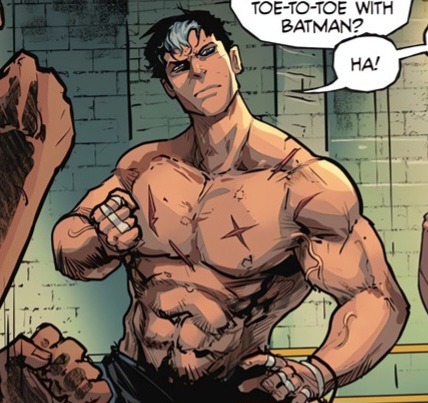
#dc#dc comics#comic books#gotham war#the gotham war#comic art#gotham war red hood#red hood and the outlaws#task force z#comic pages#comic panels#jason todd#red hood#batfam#batkids#death in the family#nikola cizmesija#eddy barrows#character analysis#jason peter todd#lazarus pit#character design#media commentary#media analysis#comic analysis#rhato
599 notes
·
View notes